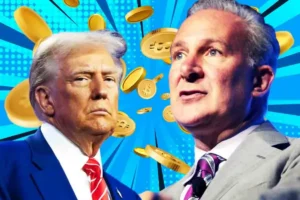Strategic Treasury Shift in Cardano: Energizing DeFi and Stablecoin Sectors
The Cardano ecosystem is on the brink of a potentially transformative treasury decision aimed at bolstering its decentralized finance (DeFi) and stablecoin industries. On June 13, Charles Hoskinson, the founder of Cardano, proposed the allocation of approximately $100 million worth of ADA from the network’s treasury to a diverse blend of stablecoins and Bitcoin. This strategy could address significant hurdles that Cardano has faced in growing its presence in the DeFi sector.
Addressing Key Weaknesses
Hoskinson articulated that the current state of stablecoin adoption plays a crucial role in determining Cardano’s competitive edge in the DeFi landscape. He noted, “What is killing Cardano is our stablecoin situation. This would start to solve it.” By converting $100 million in ADA into a mixture of existing stablecoins on the platform—such as USDM and USDA—and synthetic options like iUSD, alongside Bitcoin, the ecosystem aims to generate non-inflationary revenue and consequently enhance its DeFi environment. This strategic shift is intended to mitigate existing limitations and uplift Cardano’s market stance.
Competitive Landscape
Cardano’s performance in DeFi and stablecoin activities has lagged behind leading networks like Solana and Ethereum. As per data from DeFiLlama, Cardano ranks 46th globally in stablecoin activities, with a meager market cap of roughly $31.3 million. Furthermore, the total value of assets locked in Cardano’s DeFi protocols remains below $400 million, starkly contrasting with competitors that boast billions. The proposed treasury adjustment could serve as a catalyst, increasing Cardano’s appeal to developers and users alike.
The ADA Sale Debate
Despite the potential advantages of this treasury maneuver, concerns have emerged among the community regarding the implications of selling $100 million worth of ADA and its potential impact on the token’s price. Hoskinson dismissed these worries by emphasizing the liquidity of Cardano’s market, stating, “The markets are deep.” He indicated that with proper execution through Over-The-Counter (OTC) trades and Time-Weighted Average Price (TWAP) strategies, the sale could occur without adversely affecting market prices.
Market Resilience
Further arguing against fears of market disruption, Hoskinson reinforced that Cardano’s ecosystem is robust enough to absorb such a sale. He explained, “If 100 million could move the market, Cardano would have extreme volatility.” Given that billions of dollars in ADA are traded weekly, a well-managed liquidation could generate adequate buy demand to counterbalance any selling pressure. This reflects a comprehensive understanding of market dynamics, which is essential for retaining investor confidence.
Ensuring Sustainable Ecosystem Yields
While the proposed treasury allocation shows promise, Hoskinson emphasized the importance of assessing the readiness of Cardano’s DeFi protocols. Ensuring sustainable yields within the ecosystem is crucial for the long-term viability of any treasury strategy. This careful consideration can lead to enhanced adoption and utilization of the various DeFi applications built on Cardano, thereby fostering a vibrant economic environment.
Conclusion
As Cardano navigates the challenges of expanding its DeFi and stablecoin sectors, the proposed $100 million treasury shift could offer a pathway to greater competitiveness. By converting treasury assets into a diverse range of stablecoins and Bitcoin, Cardano could not only strengthen its financial foundation but also enhance its credibility in the DeFi space. With careful execution and a focus on sustainable growth, Cardano has the potential to emerge as a formidable player in the evolving crypto landscape.

















